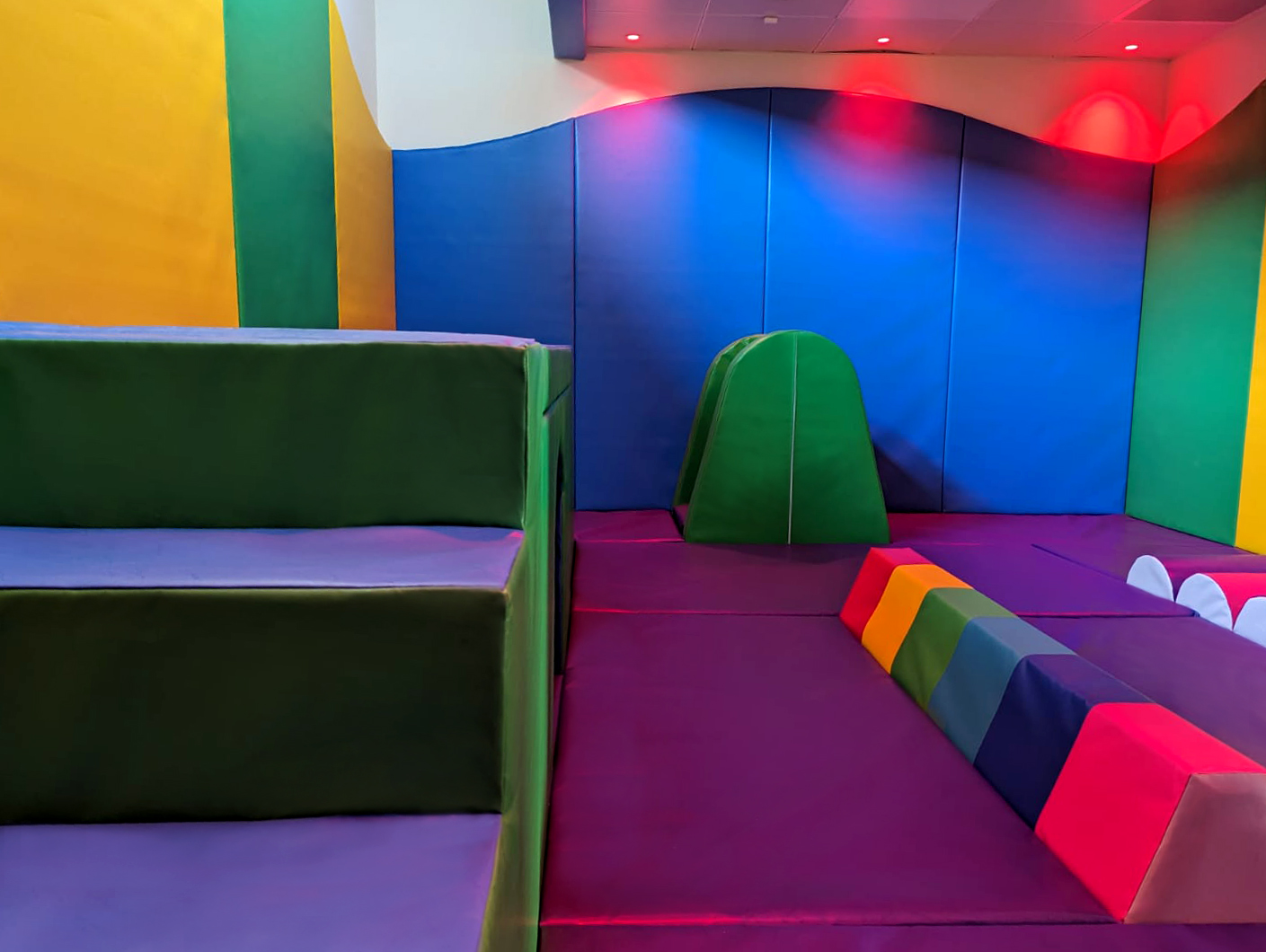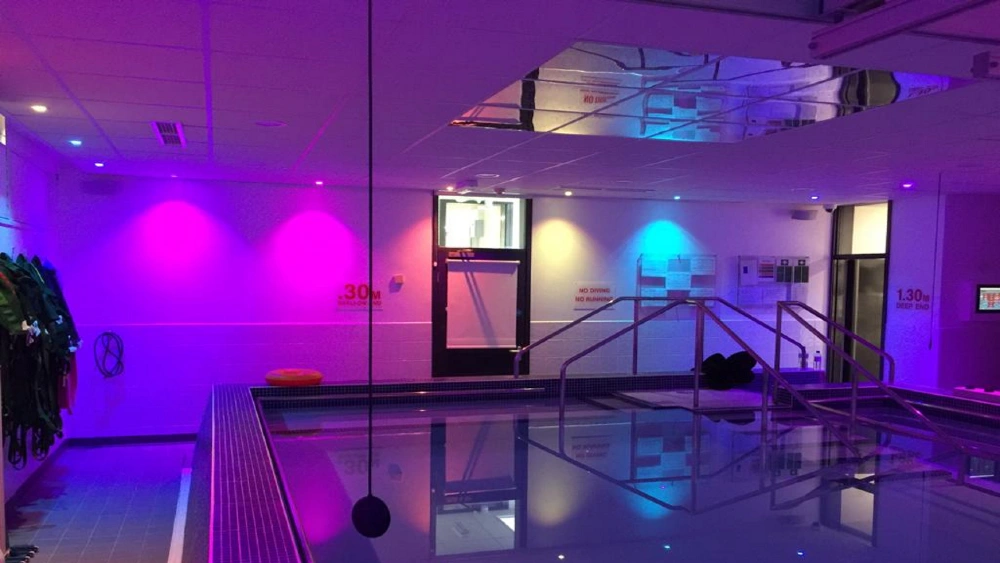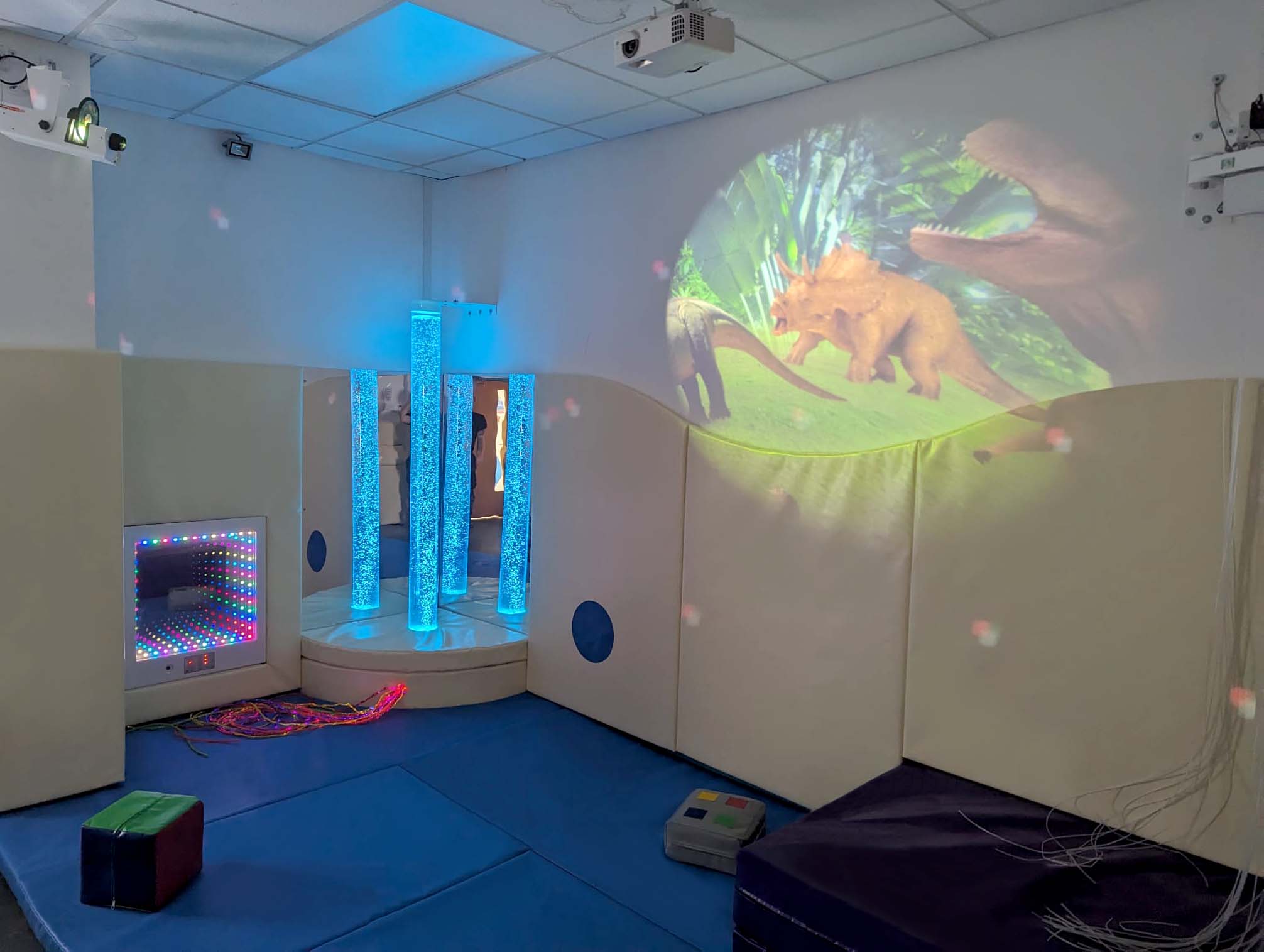Over the years, we’ve installed soft play rooms with a variety of designs and features, each tailored to the needs of those using them. Soft play spaces aren’t just about fun; they provide a safe, engaging environment for movement, sensory exploration, and skill development.
Choosing the right design features ensures the room meets both functional and developmental needs. Let’s explore the variety of soft play room features and the benefits they bring.
Soft Play Room Layout & Design Considerations
Designing a soft play room isn’t just about filling a space with play equipment—it also requires thoughtful planning to ensure that every element serves a purpose.
The layout needs to encourage safe movement and exploration, avoiding overcrowded areas while ensuring easy access to different features. Zones within the room can be tailored to specific activities, such as active play, relaxation, or social interaction. The choice of flooring is essential, with cushioned, impact-absorbing materials providing a safe surface for movement and falls. Wall padding adds an extra layer of protection, ensuring a secure environment for users of all abilities.
Lighting and colour schemes can be customised to suit the mood of the space, with brighter, more engaging tones promoting energy and pastels or muted hues creating a calming atmosphere.
Key Soft Play Room Features
When designing a sensory room, we look at several lighting options available, each offering unique benefits that cater to different sensory needs and experiences. When selecting lighting, it’s essential to consider both functionality and engagement.
The lighting within a sensory room can be found in two forms:
Climbing & Movement Zones
Physical movement is key in any soft play space to help children develop motor skills, coordination, and confidence. By including features such as stairs, podiums and slides, we can encourage active play in a safe and structured way.
These elements provide a range of physical challenges, allowing users to explore different movement patterns while remaining within a controlled, padded environment.
Key features include:
- Tunnels and crawl spaces are great for encouraging exploration and spatial awareness, also providing a refuge where children can take a time out.
- Stepping stones and balance beams to help improve coordination and motor control in a fun way that keeps focus on the task at hand.
- Soft padded steps, podiums and slides provide height variation for safe and controlled movement play.
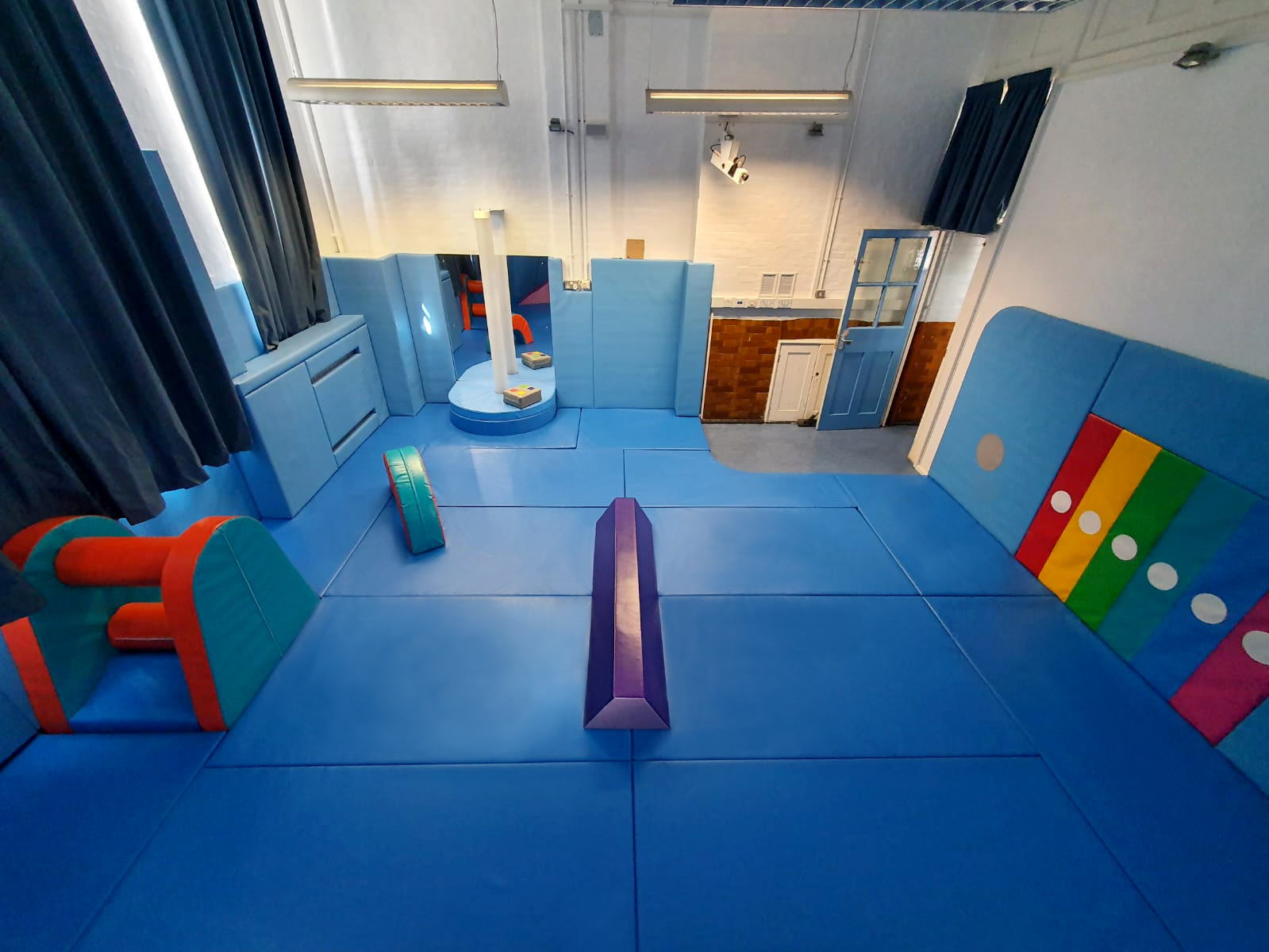
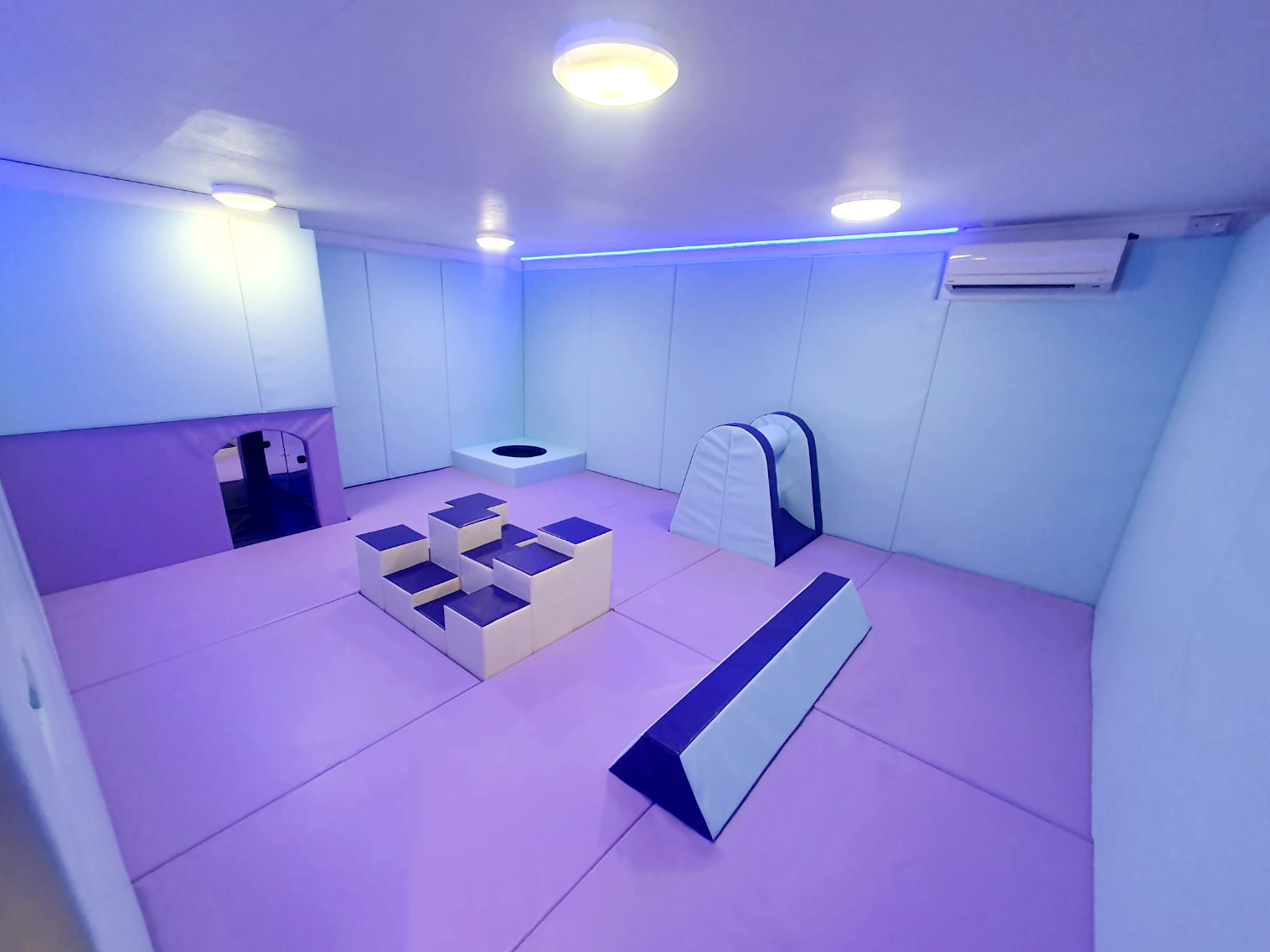
Ball Pits and Soft Play Shapes
Every child loves a ball pit, and they remain a staple of soft play design, offering an immersive experience that promotes physical movement and play. Soft play shapes, including steps, blocks, and tunnels, allow for open-ended play, where users can build, climb, and create their own physical games. These features foster problem-solving and encourage imaginative play.
Benefits of these features:
- Ball pits provide pressure input, improving sensory regulation and relaxation.
- Soft play blocks allow users to construct and build their own environment.
- Mats and stacking shapes similarly encourage creativity and motor development.
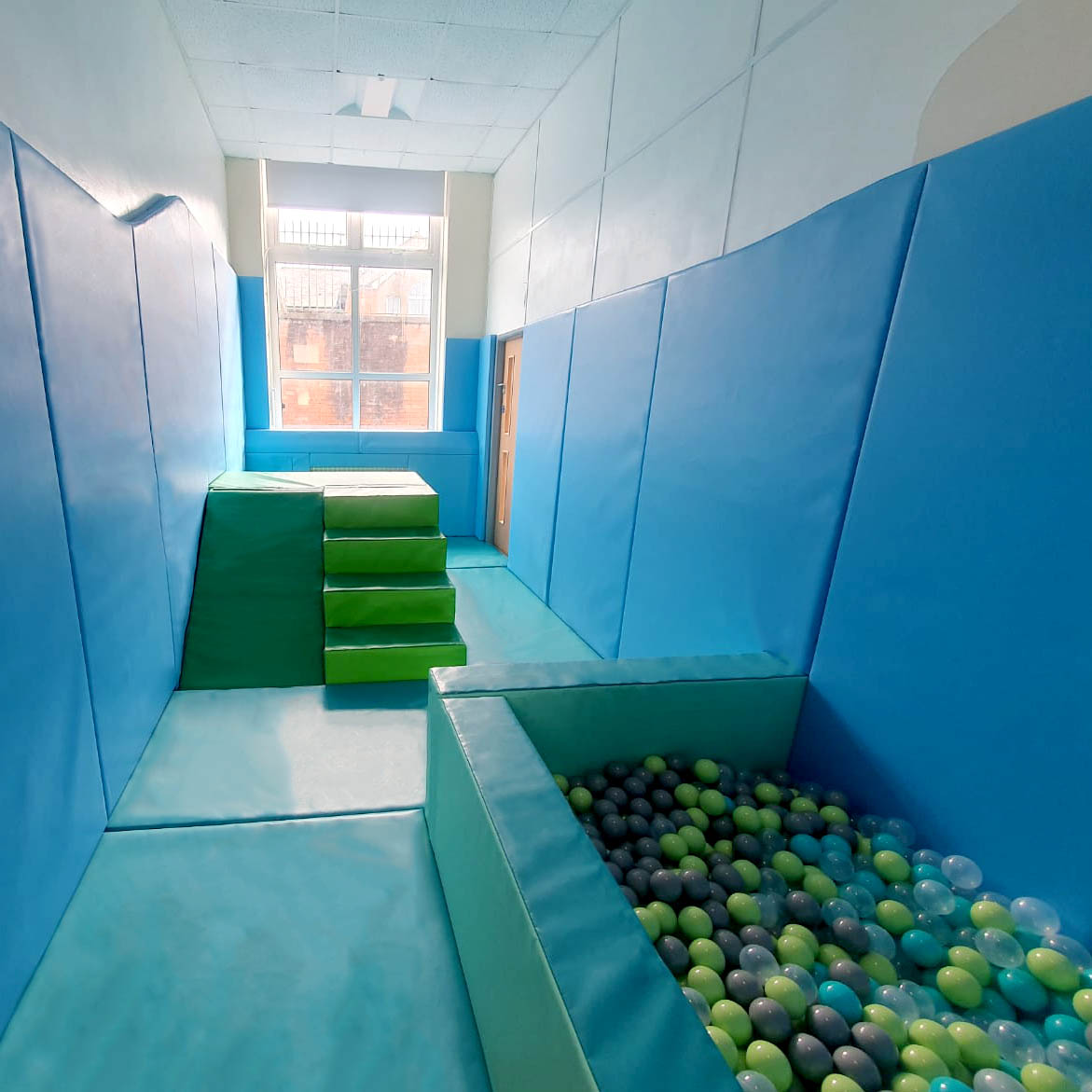
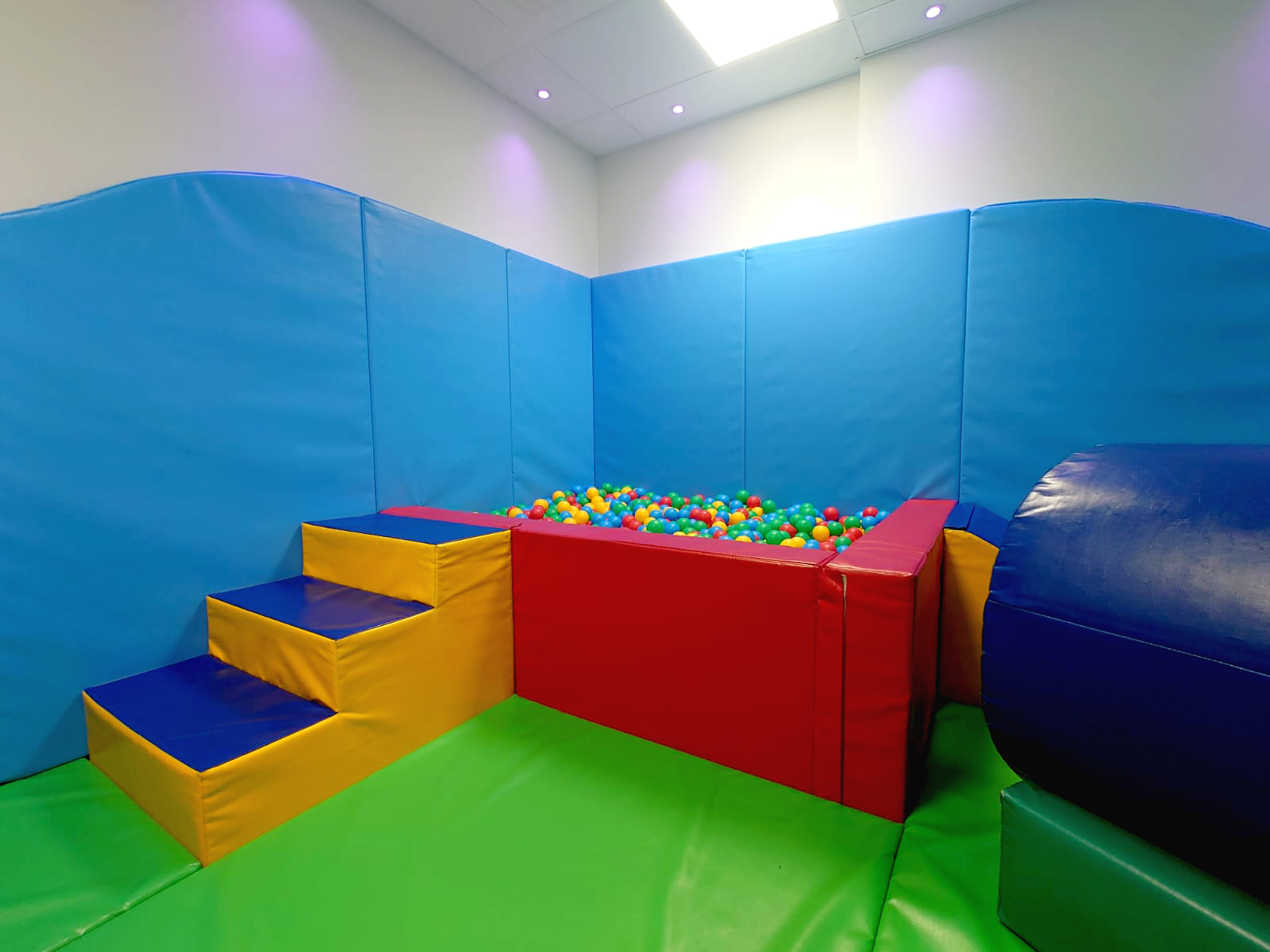
Seating and Calming Areas
While active play is important, quiet spaces within soft play rooms help users regulate emotions and take breaks when needed. Soft seating, bean bags, and enclosed ‘pod’ areas create comfortable zones for relaxation and social interaction. These areas are particularly beneficial for individuals who need a space to retreat to and self-regulate in a controlled environment away from any noise.
Key elements include:
- Soft bean bags and padded seating provide a comfortable place for rest and social interaction.
- Enclosed pods and hideaway areas are great for offering a private, quiet space for emotional regulation.
- Motion oriented seating such as half rockers and soft play sausages can be used for both interactive play and soothing rocking movements.
A well-designed soft play room is more than just a space for play. It’s a safe, engaging environment that supports physical, sensory, and cognitive development. The right design features help maximise interaction, inclusivity, and fun while ensuring that the space meets the needs of its users.
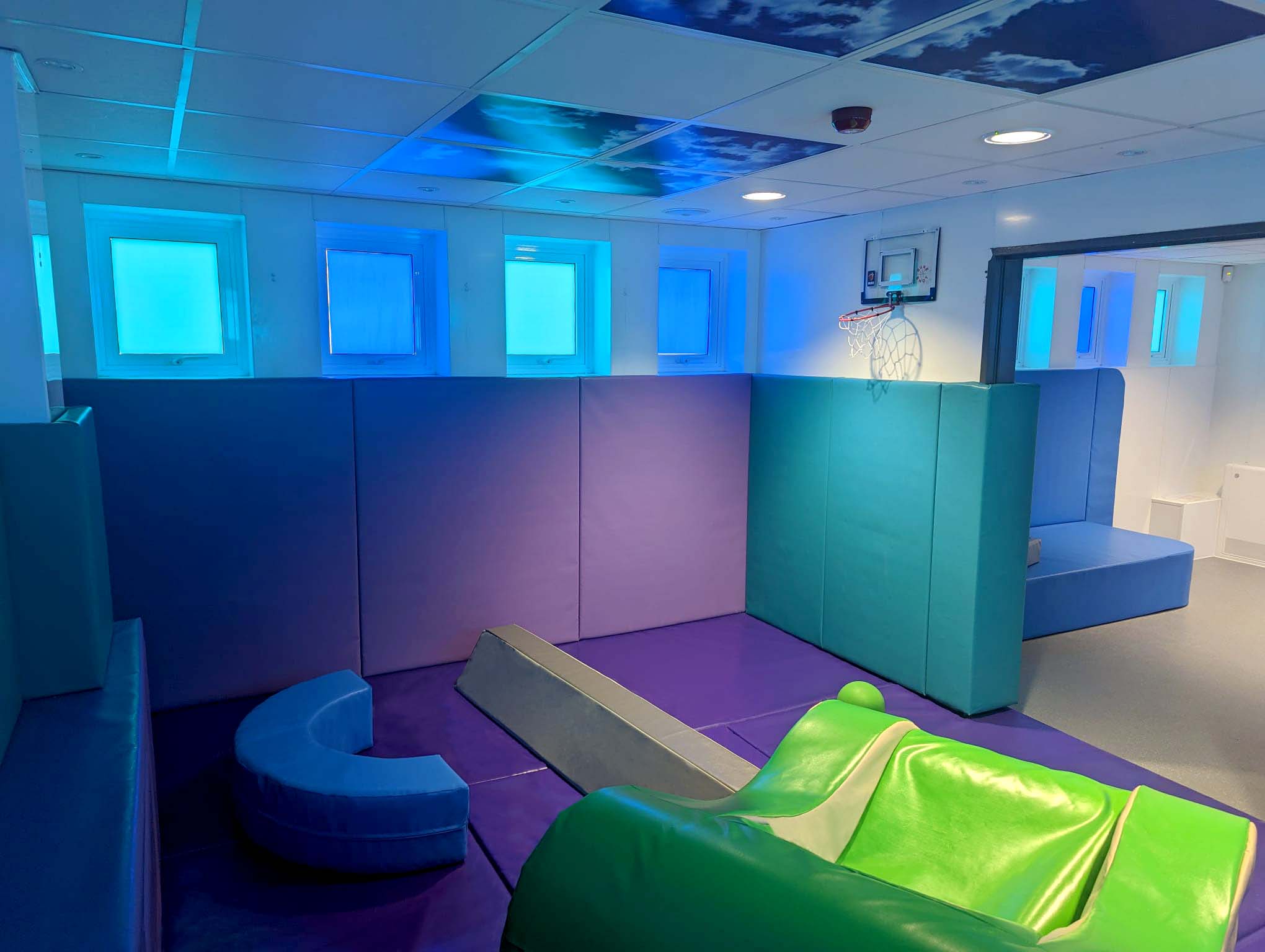
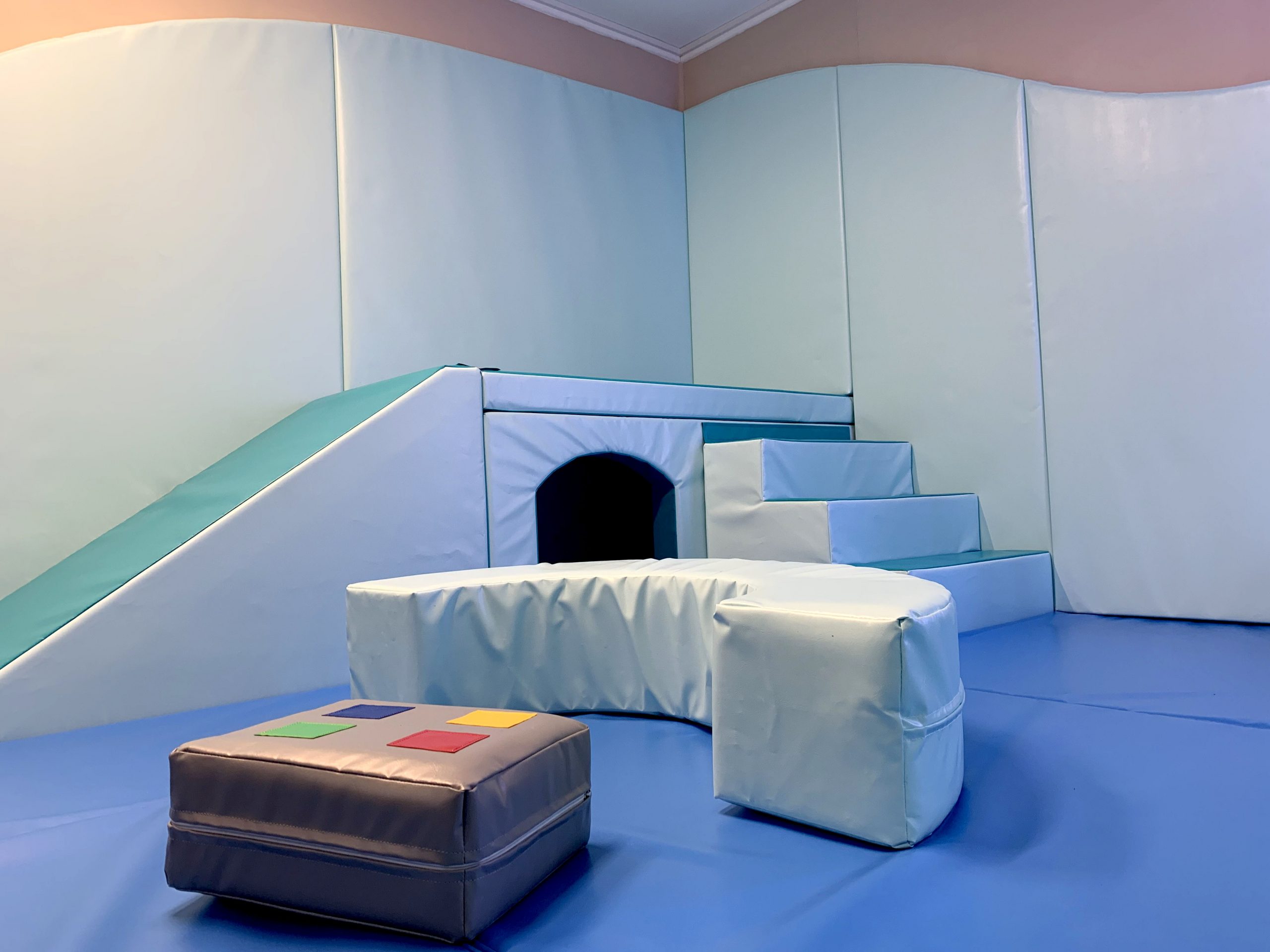
At Sensory Technology, we specialise in creating amazing soft play environments designed for high levels of engagement, and inclusivity. If you’re looking to design a soft play space that perfectly suits your needs, get in touch with us today to start planning your perfect soft play room!

